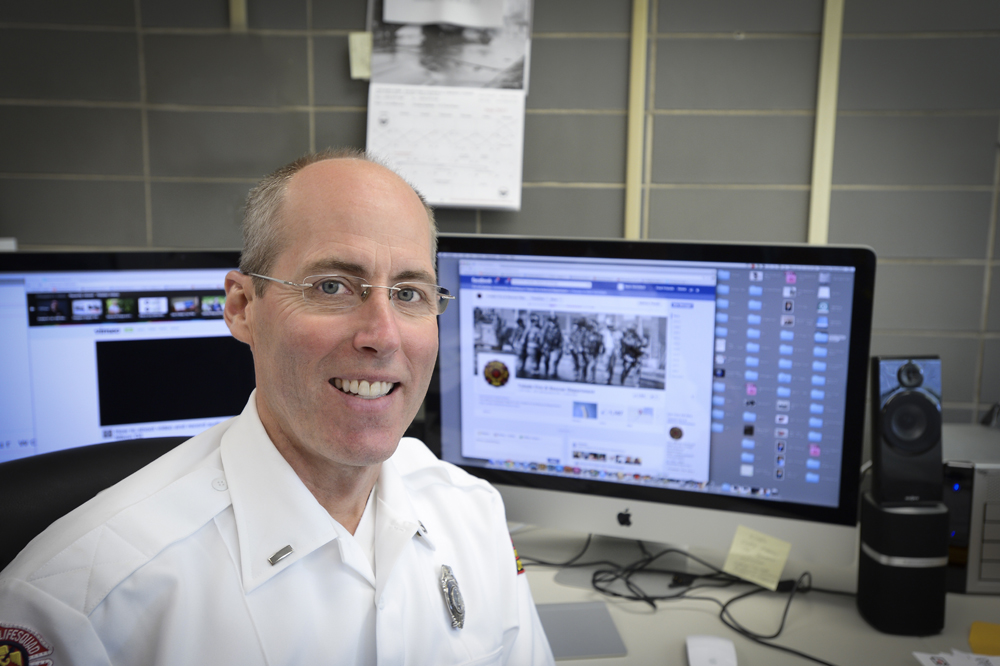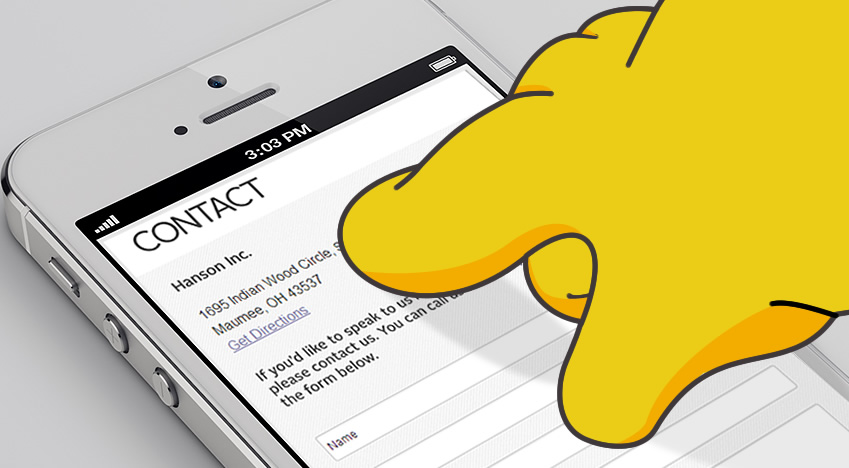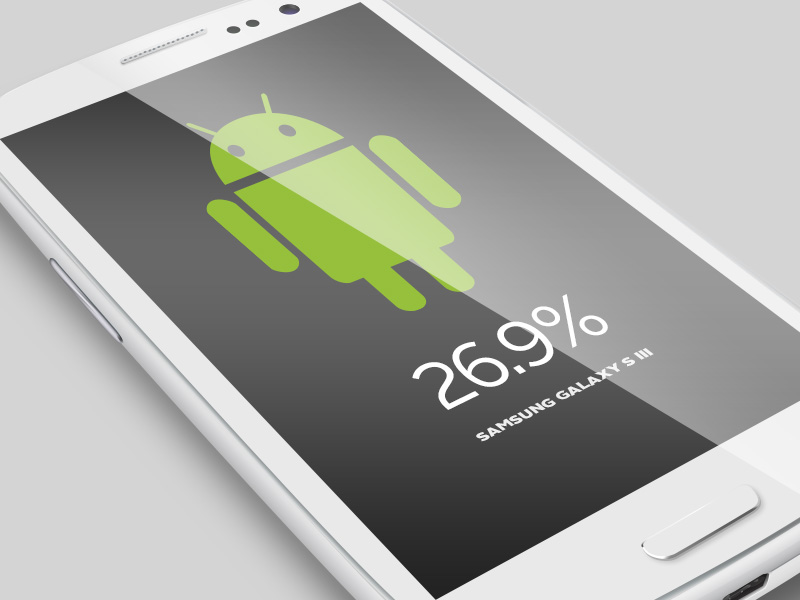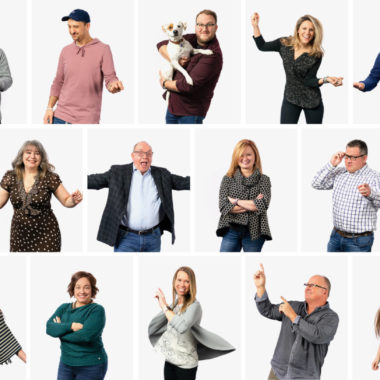Social Media in the Public Sector: An Interview with Lt. Matt Hertzfeld of the Toledo Fire and Rescue Department
Last year, Hanson partnered with the Toledo Fire and Rescue Department to develop a beautiful, responsively-designed website, along with a presence on Facebook. They’ve been tremendously successful, thanks in no small part to Lt. Matt Hertzfeld, Public Information Officer. He recently took the time to chat with us about his experience developing the department’s digital properties and some of the lessons he’s learned.
How has your perspective on communication changed since you started developing the department’s website and Facebook page?
I think it’s obvious that social media has changed the world we live in and how businesses and governments interact with their constituents. For the fire service to remain relevant and for people to have a good opinion of us, this is crucial. Budgets are shrinking, and in order to strengthen our relationship with the public we realized that we needed other forms of communication.
How is social media helping you to strengthen that relationship with the public?
For us, the biggest thing is education. Most citizens have a one-dimensional view of the department. They think “fire fighter” and they think putting out fires, but we’re a multi-hazard response team. One-hundred-sixty of us are paramedics. We provide all the EMS in Toledo, so we respond to all the heart attacks, shootings, stabbings, car accidents, etc. In addition we also have 5 technical rescue teams.
But we’ve never been good storytellers, and we’ve taken for granted that people know this information about us. The old way to get information out was through tv and newspaper, and traditional media was challenging because if there were other stories going on, they were less interested in the stories we wanted to tell. But now with social media, we can tell the stories ourselves.
When I post something, people respond and we can have a dialogue – which we couldn’t have with traditional media. That’s what is exciting for us. Not everyone is on Facebook so we still see traditional media as an important venue. But social media is a game changer that allows us to go directly to the citizens, when we have to.
Have you seen positive changes with your media relationships?
Enormous changes. The department was founded in 1837, but we never had a public information officer until two years ago when Chief Santiago asked me to do this. We never had a single point of contact for the media. But here we are almost two years later and I have very strong contacts with print and television media. That’s led us to times when they are looking for stories and they call me, or I provide a point of view on national stories.
That’s another form of communication, seeing the fire department on tv again. That builds trust in the relationships we have not just with the media, but with the public. We’re going into people’s home at dire times, and we bring a certain amount of comfort and compassion at those times. That trust applies even in non-emergency times. Social media helps our customer service and enhances our transparency.
It’s more about directly delivering information now instead of just providing the information for delivery elsewhere.
How does this engagement with the public feed back into the work the department is doing?
Something that frightens people about social media is that it’s a 2-way street. But it’s incredible. A couple of the videos I posted have had around 12,000 views. And the comments people leave and the emails I get through our website floor me. I talked to a woman recently who called me two days after her husband died – two days! – to thank our EMS team for the great job they did.
When people write comments or email or call, I try to track down the crews who were involved in that incident and pass on that information to them. Last year we responded to over 55,000 incidents, very busy for a city the size of Toledo. This is our job, and – I mean this in the best way – you become almost numb to what you’re doing, because it’s something you do every day. Our people are so used to responding to an incident and then going back to the station to finish their ham sandwich, that they don’t realize the impact they’ve just had on the people they served. So they’re floored when I come back to them with the thank yous and the other encouraging comments. It helps them see how they’re making a difference every day. I’ve encouraged all of our firefighters to like our Facebook page so they can see these comments for themselves.
You give a big priority to photos in your online content. Do you take them all yourself, or do you use photos provided by the public or media? How do you decide which photos to use?
We have used photos from other photographers, but the challenge is that a lot of times I have access to scenes that the media or other members of the public don’t have, or don’t arrive in time to get. I’ve been a photographer for over 30 years and a fireman for 29, so I know my way around those scenes, and my work often shows up in the print media and television as well.
Social media allows us to bring an authentic approach, where we can use photos to tell the story the way we want it to be told. Sometimes those stories are close to home, and sometimes they’re not. I posted a story about four firefighters in Houston who died in the line of duty. Everyone is so busy, and we hear about this tragedy in Houston and it’s far away. But I want people to see that photo on our Facebook page and look those four people in the eyes and appreciate the sacrifice that they made.
As the Public Information Officer, you’re the media spokesperson, the photographer, the videographer, and the website and Facebook editor. How do you manage all of that?
I don’t have a schedule, and I gave up trying to plan my day a long time ago. That’s one of the first things I’ve learned. A fire call could come in and I have to go to that right now. That trumps everything. This position is defined as a desk job now, but I’m not at my desk all the time. I jump in my car and go, I shoot video and stills because I have all these tools at hand. I keep chipping away at long-term projects, too, but if I hear a bad car-wreck come in over the radio on my way in, I get over there and give a response to the media and take photos and bring them back to the office and post them online.
What’s challenging is that the nature of what we do is reactive. When we can, we try to be proactive, in terms of fire prevention, tips, etc. But I find it interesting that the proactive things we do get a lesser response. May was electrical safety month, so I put up some information about that and it got an abysmal response.
Once we get a little more established, I’d like to change the tone of how we do things, use some humor where it’s appropriate. Ultimately, what I’m trying to do is show people behind the scenes of the fire service, and I want to use all the tools at my disposal.
What advice do you have for other public sector / government services that are interested in getting more involved in social media?
It’s a commitment. If you’re going to do it, you’ve got to do it the right way, as best you can. Unless you make that commitment, don’t bother doing it. It’s a double-edged sword, and if you don’t take care of it, it will cut you. I was not involved with Facebook before we started this, and now I have a different perspective. We didn’t have a choice, given the direction we wanted to take the department, and it needed the commitment from the chief and the mayor and a lot of other people.
It has been the right decision for our department. I attended a seminar in Washington on social media and government with people from all kinds of agencies. When we showed our Facebook page and website to people and talked about the likes and views we’re getting, people were stunned.
And it’s bigger than Toledo. It’s everybody. We’ve gotten messages from people in South Africa, the Ukraine, people around the world. There’s a broad range of things that we didn’t anticipate when we started this, and it’s amazing how much we’ve learned and the support we’ve gained. It’s been an interesting journey.





